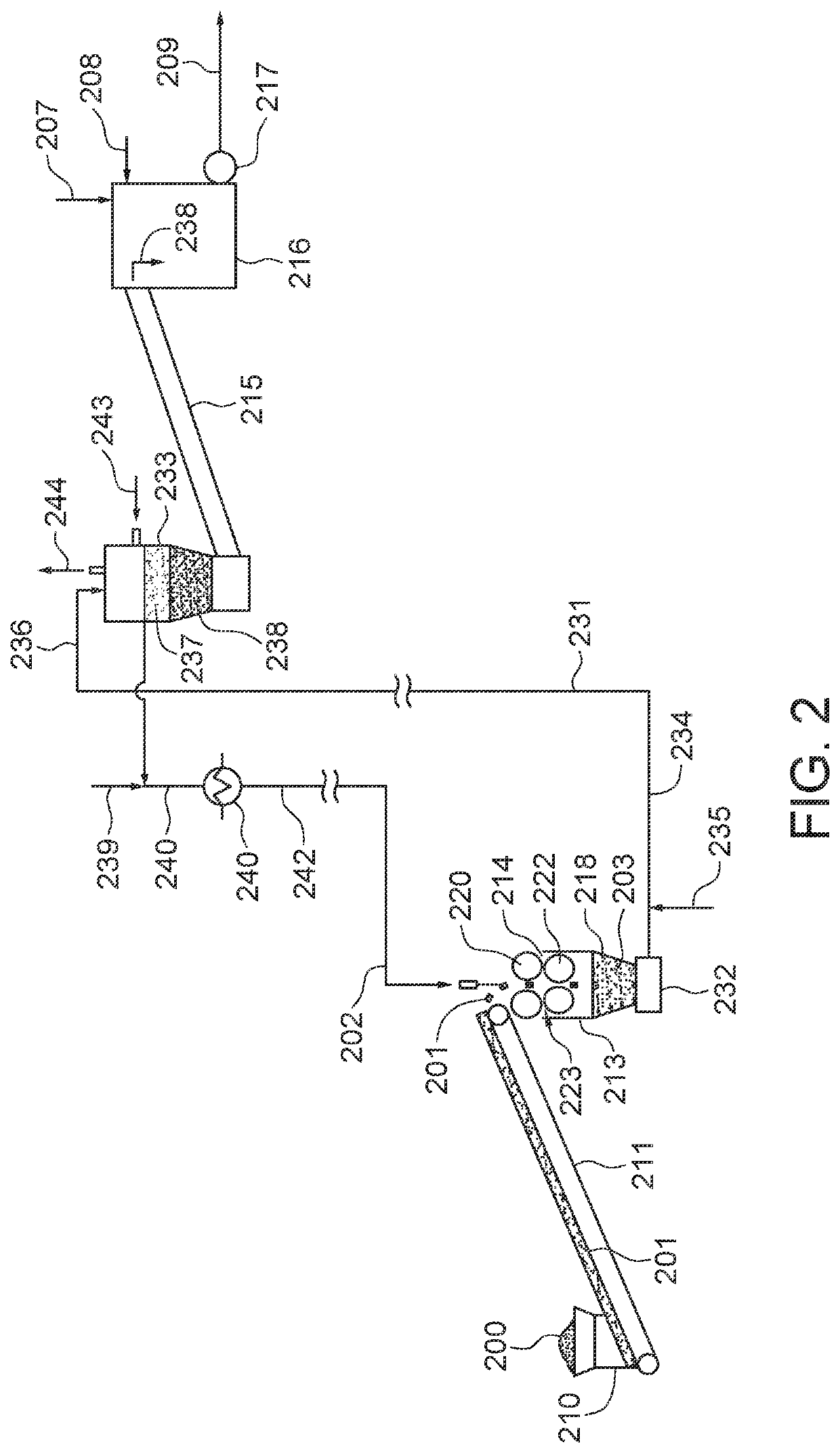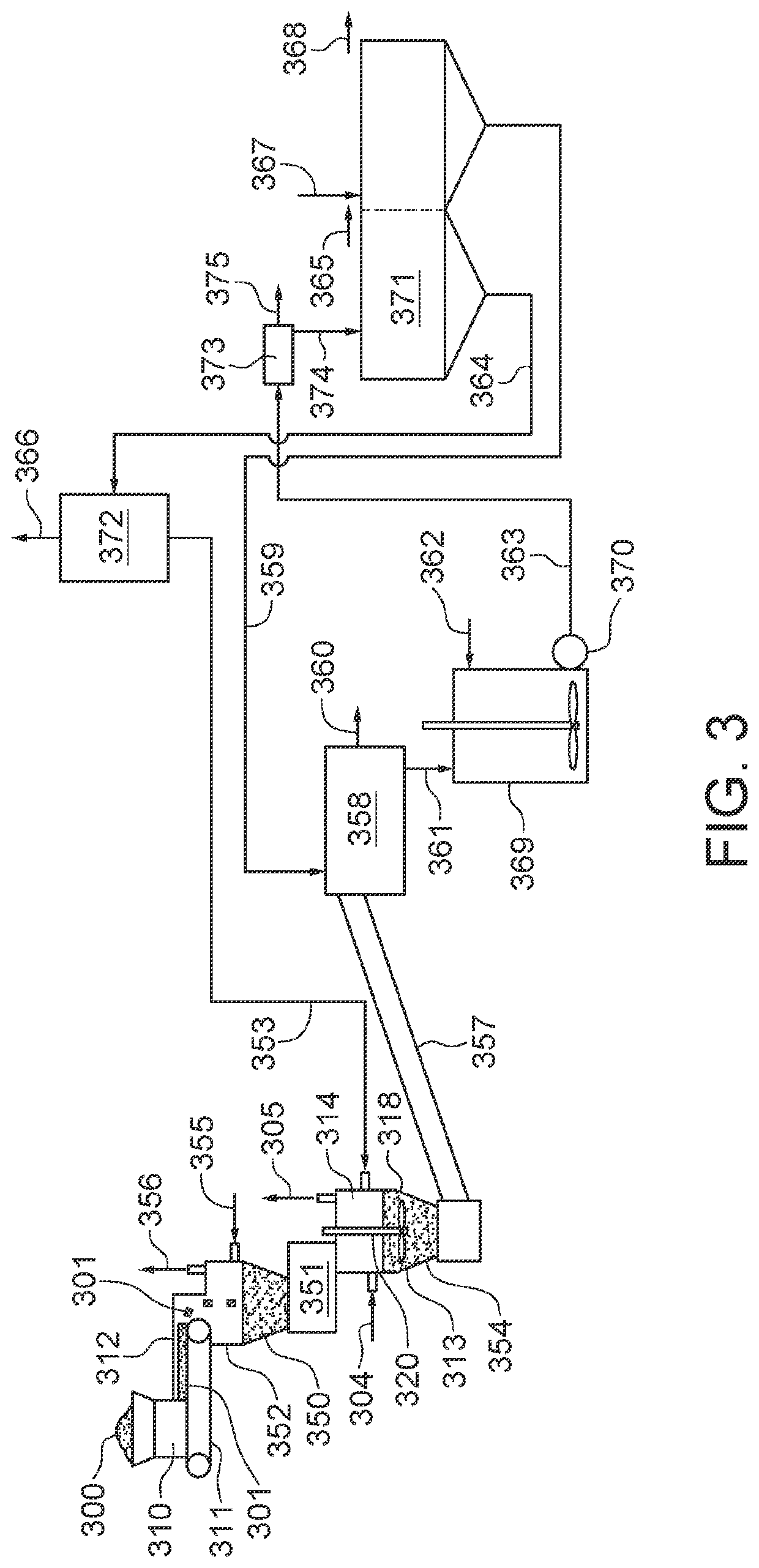Process and process line for solvent extraction of bitumen from oil sands
a technology of solvent extraction and oil sands, which is applied in the petroleum industry, liquid hydrocarbon mixture production, etc., can solve the problems of economic loss and environmental problems, bitumen recovery, and inability to direct mix with flammable solvents, and the sand mined from which air pockets are formed
- Summary
- Abstract
- Description
- Claims
- Application Information
AI Technical Summary
Benefits of technology
Problems solved by technology
Method used
Image
Examples
example 1
[0061]A loose oil sand contained 8.8 wt % bitumen, 5.3 wt % water and 85.9 wt % solids. The fines (3. Based on the theoretical density of such slurry (1676 kg / m3), it was calculated that the voidage in such slurry was 3 vol %. The entrained air was merely 0.0028 wt % of the oil sand mass. The experiment shows that making such dense slurry with a heavy solvent is an effective way for deaerating oil sands.
example 2
[0062]A loose oil sand contained 9.9 wt % bitumen, 5.2 wt % water and 84.9 wt % solids. The fines (6-C9) through brief stirring with a rod at room temperature in a 1 L graduated cylinder. The resulting dense slurry contained 70 wt % solids. The bitumen concentration in the hydrocarbons after complete dissolution would be 65 wt %. The height of the slurry was 12 cm. The density of the slurry was determined by weighing the graduated cylinder and measuring the slurry volume to be 1656 kg / m3. Based on the theoretical density of such slurry (1667 kg / m3), it was calculated that the voidage in such slurry was 0.7 vol %. The experiment shows that making such dense slurry with a concentrated bitumen in light naphtha solution is a highly effective way for deaerating oil sands.
example 3
[0063]An oil sand contained 8.9 wt % bitumen, 6.3 wt % water and 84.8 wt % solids. The fines (6-C9). The slurry was flocculated with 22 g added water in the mixing tank in each case. The slurry was filtered on a batch vacuum filter and washed with solvent-rich hydrocarbon liquids prepared based on countercurrent solvent wash modelling. There were four drainage stages in each case. The vacuum was set at −0.17 bar for each stage. Filter cake was repulped with a hydrocarbon liquid between the second and the third drainage stages. The final wash liquids at the fourth drainage stage comprise 225 g heptane and 208 g light naphtha for the two experiments, respectively. Bitumen recoveries were 93.3% for the light gas oil+heptane experiment and 93.5% for the light naphtha experiment. In the first experiment, there was a further 3% loss of light gas oil that needs to be recovered in a solids dryer. Therefore, bitumen extraction with light naphtha alone is at least as effective as extraction w...
PUM
| Property | Measurement | Unit |
|---|---|---|
| temperature | aaaaa | aaaaa |
| size | aaaaa | aaaaa |
| size | aaaaa | aaaaa |
Abstract
Description
Claims
Application Information
 Login to View More
Login to View More - R&D
- Intellectual Property
- Life Sciences
- Materials
- Tech Scout
- Unparalleled Data Quality
- Higher Quality Content
- 60% Fewer Hallucinations
Browse by: Latest US Patents, China's latest patents, Technical Efficacy Thesaurus, Application Domain, Technology Topic, Popular Technical Reports.
© 2025 PatSnap. All rights reserved.Legal|Privacy policy|Modern Slavery Act Transparency Statement|Sitemap|About US| Contact US: help@patsnap.com



